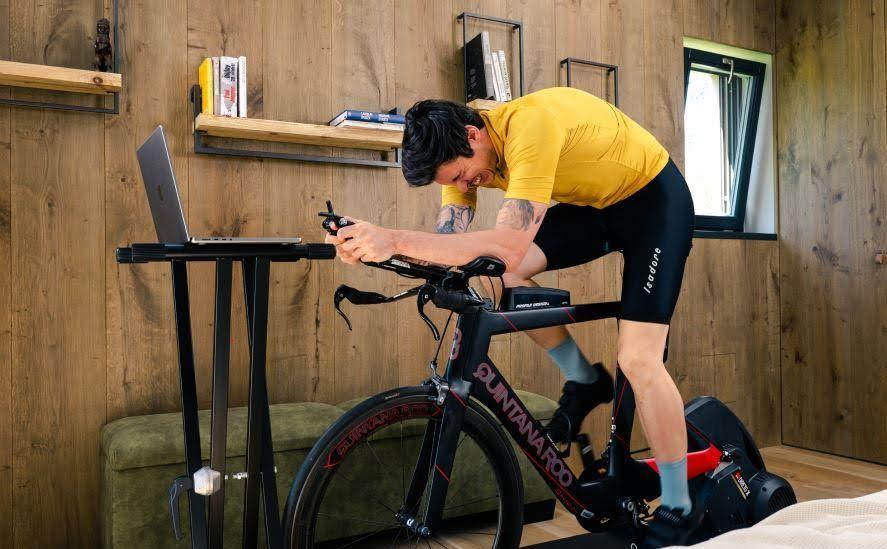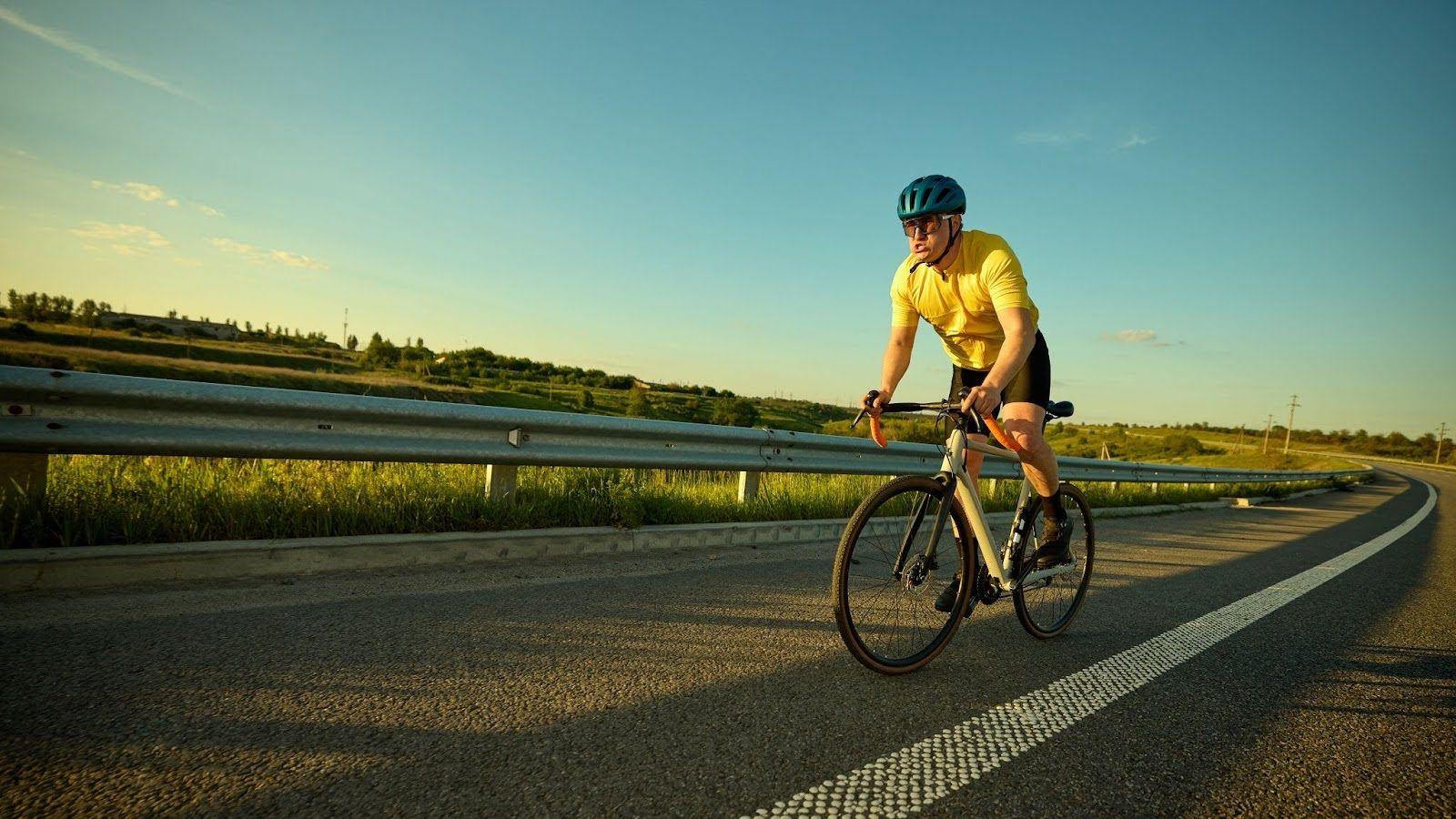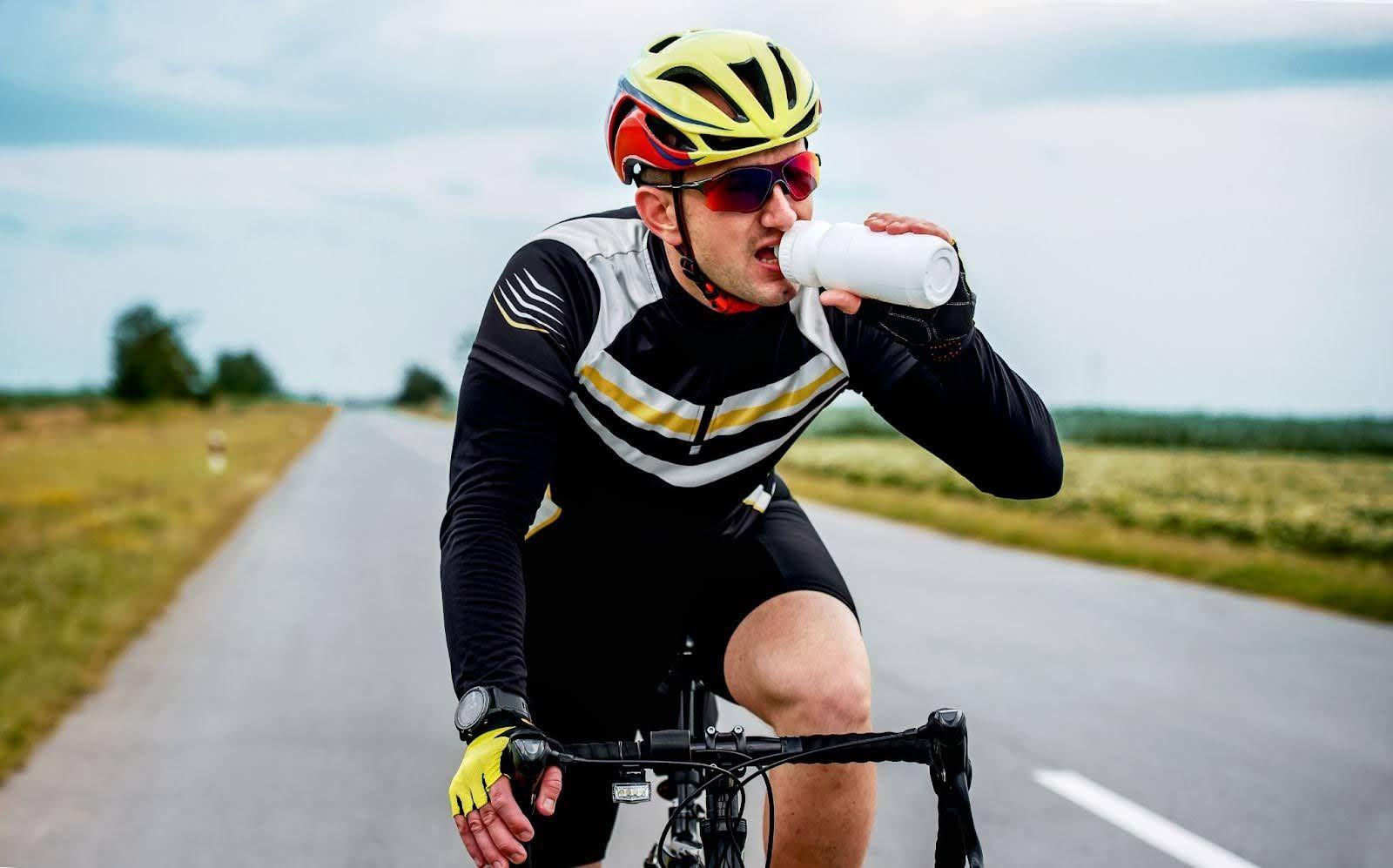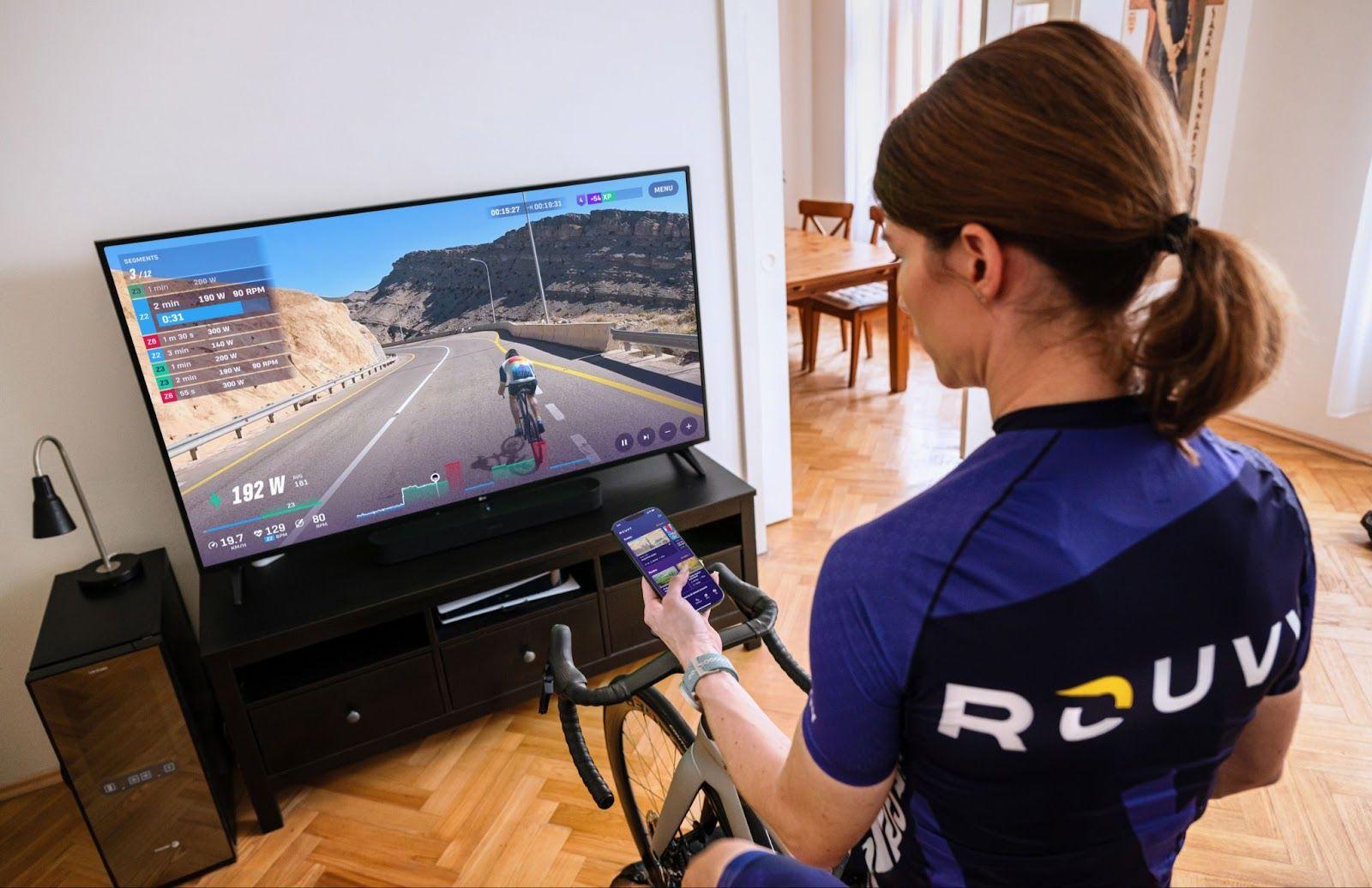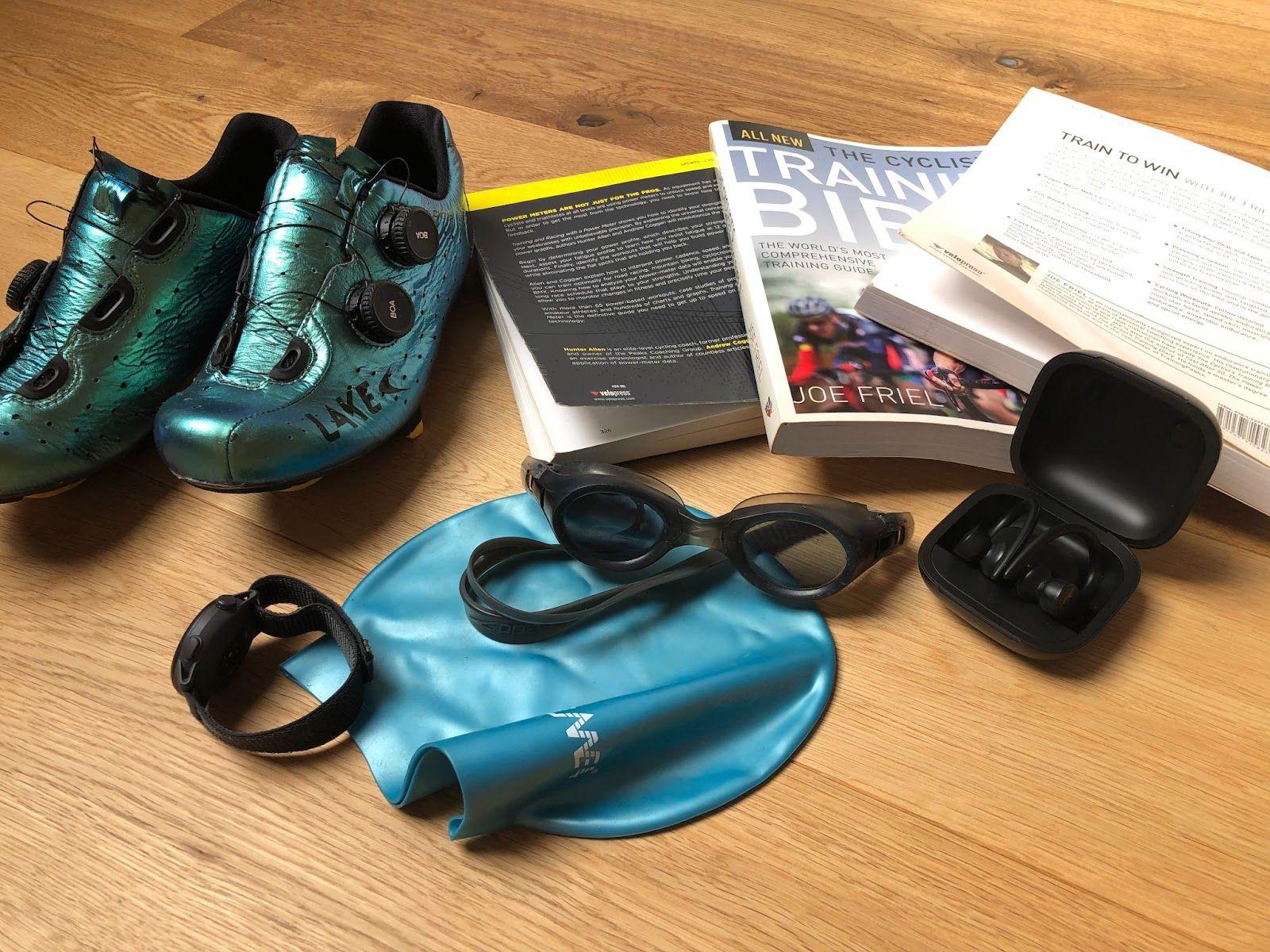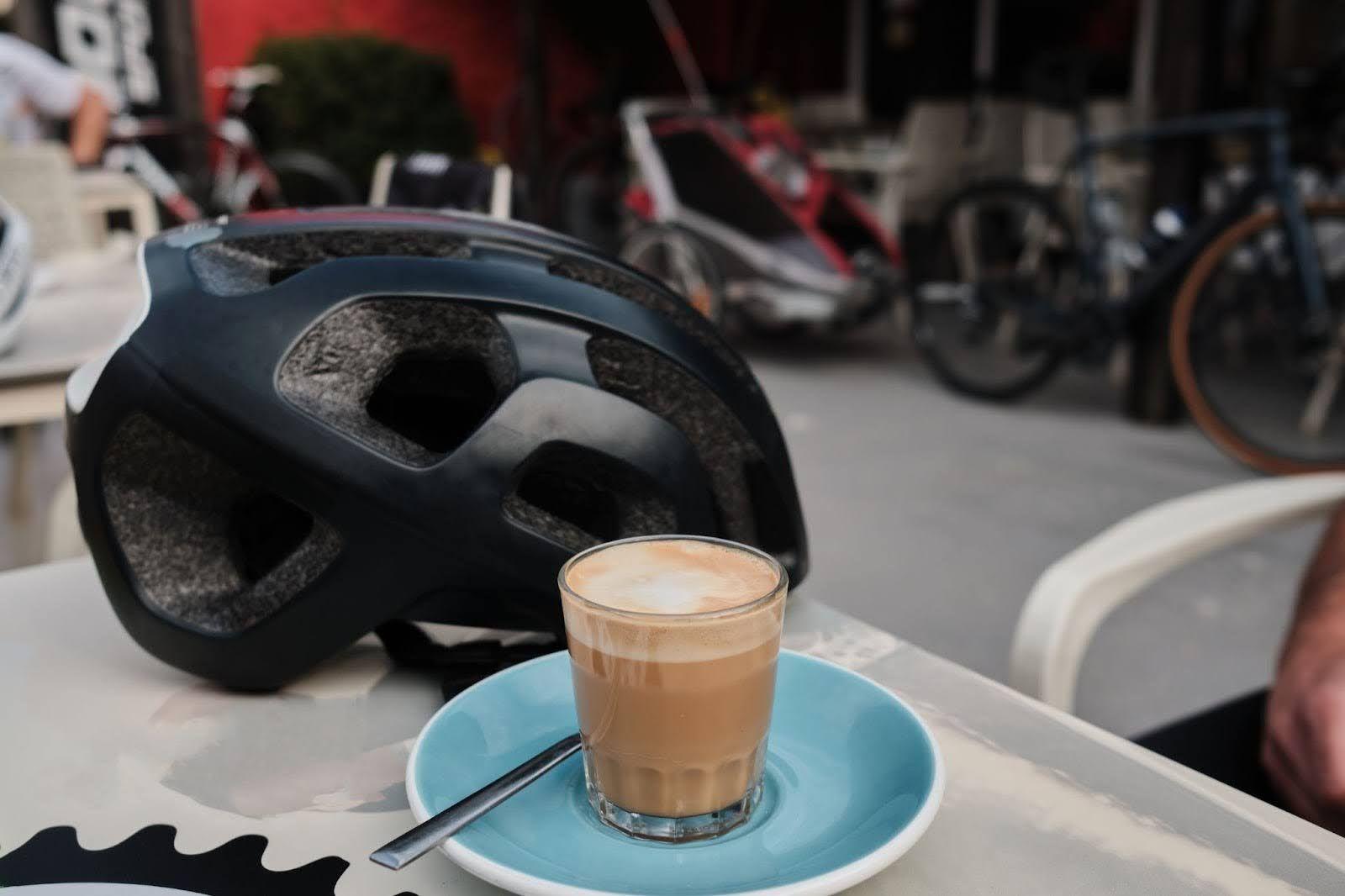I couldn’t help but snicker when my friend texted about how he was dreading his upcoming, long trainer ride. Let’s face it – after a long day in the saddle, your back hurts. Maybe your hips feel stiff and, once you sit down, you just don’t want to get back up. Maybe your neck feels tight from your aero position. Perhaps you just feel a bit unsteady on the bike. These discomforts can be amplified if you’re doing a long endurance ride indoors.
You might be surprised when you realize that yoga, of all things, can help you ride better, faster and longer.
Not every workout has to be an all-out suffer fest – in fact, gentle, slow yoga can help you recover faster, feel more flexible and improve your core strength and bike handling. It can also help you improve your breathing and lung capacity, correct your posture and prevent injury.
A quick yoga session can help you warm up for your indoor rides on ROUVY or help you cool down and recover after a hard session. It can work out those kinks that come from riding hard on, or help you overcome muscle imbalances from only using specific muscles in the same position.
Yoga will strengthen your stabilizer muscles, improve support for your spine, enhance your sense of proprioception and develop your core muscles. Breathing techniques will improve your lung capacity and reduce stress, working together to make your ride more comfortable and increase your resilience to injury.
Key benefits of yoga for cyclists – including flexibility, posture and recovery
The hunched-over position on a bike can shorten and tighten the hamstrings and hip flexors, which can impede cycling and lead to back pain and poor posture. Yoga can open and lengthen these muscles, which will help prevent injury and back pain.
In track cycling, my coach taught me to brace my core during a sprint to achieve better power transfer to the pedals and maintain bike stability. That level of core strength also carries over onto the trainer. The best yoga poses for cyclists generally work core strength, specifically the rectus abdominis, the transverse abdominis, the obliques, the pelvic floor and the erector spinae. These muscles work together as a unit to maintain posture, protect the spine and transfer energy from the body to the pedals.
Yoga also benefits cyclists by reducing muscle tightness and lowering the risk of injury, as it emphasises alignment, balance and flexibility. It counteracts the risk of injuries from repetitive motion and static positioning associated with cycling, while reducing muscle soreness and fatigue.
Yoga also calms the nervous system, which can alleviate the stress of training and help you to focus better on the work.
When and how often to practise yoga
There are different yoga practices that you can employ to enhance your cycling. For example, vinyasa, or flow yoga, combines dynamic sequences of poses with breathwork. It works great for waking up the body, creating heat and even improving cardiovascular health. Hatha yoga involves a slower, more meditative pace, making it great for cooling down, reducing stress and promoting recovery.
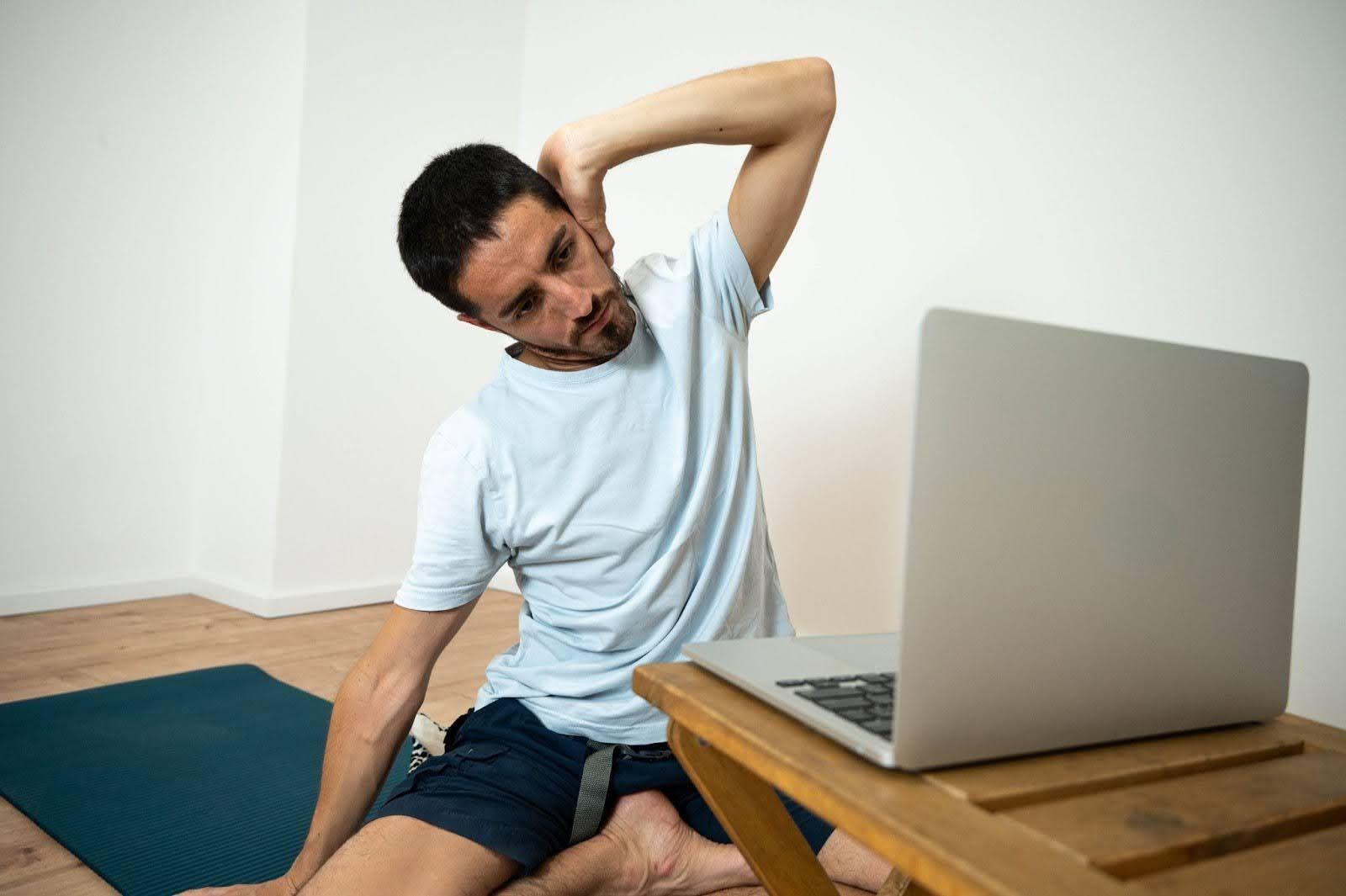
You can practise vinyasa before workouts to warm up, or in the morning to wake your body up for the day. You could practise hatha yoga as a cool-down or to help your body recover after a hard workout.
You don’t have to practise yoga every day to see results. The key is to work it into your schedule in a way that fits and is consistent. A few simple yoga poses can be incorporated into your day in just a few minutes and can be done a few times a week, or almost every day, depending on the types of poses and how intensely you practise them.
Essential and best yoga poses for cyclists
There are so many different yoga poses that you can practise, but there are a few essentials that will really help your cycling journey.
Downward Dog: This position stretches your hamstrings and calves.
Pigeon Pose: This pose is excellent for stretching and opening up tight hips.
Cat-Cow: This popular pose may look silly, but it actually increases spinal mobility.
Low Lunge: If your hip flexors are tight, a low lunge will open them up.
Child’s Pose: This relaxing pose helps to relax your lower back.
Bridge Pose: This will strengthen your glutes and your hamstrings.
Yoga stretches for cycling recovery and ROUVY rides
Yoga works well when combined with your recovery rides on the ROUVY app. After a gentle ride, switch to your yoga poses. A gentle stretch sequence that focuses on the hamstrings, quads, hip flexors and glutes should take 10-15 minutes. This sequence aims to improve blood flow and increase muscle repair.
Remember to listen to your body and take your time, being mindful of each breath.
- Downward Dog to stretch the hamstrings and back.
- Low Lunge to target hips.
- Half Moon Pose to target hip flexors and quadriceps.
- Pigeon Pose opens the hips and stretches the glutes.
- Supine Spinal Twist will stretch your back and hips.
- Calf Stretch to strengthen the calves.
- Cat-Cow to release the spine.
- Practise each pose for one to two minutes and only stretch as far as you feel comfortable.
Yoga for injury prevention and recovery
Yoga helps to even out those muscle imbalances that cycling can cause. Incorporating a yoga practice into your weekly training can help prevent injury by addressing common cycling imbalances, increasing joint mobility and strengthening those stabilising muscles.
The seated, forward-leaning posture on the bike naturally leads to tight hip flexors and quads. When you do yoga poses such as the Pigeon Pose or Low Lunge, you can stretch out those areas, which will improve flexibility.
Cycling uses the leg muscles heavily, while the core and upper body tend to be underdeveloped. A yoga practice engages your core to build strength and stability in the core muscles, which in turn provides stability for the spine. It also helps to reduce back strain on long rides. If your back muscles are weak, you may end up with back pain after being hunched over on the bike. Yoga will stretch and strengthen these muscles to prevent pain and resulting injuries.
Yoga also improves joint mobility and stability, making you more resilient, especially to repetitive motions like pedalling.
Yoga breathing for cyclists
Breathwork in yoga is known as pranayama. This powerful tool can enhance your ability to manage heart rate, improve lung capacity and accelerate recovery. Different types of breathing techniques are suitable for various aspects of training.
You’ve probably heard of diaphragmatic breathing. This technique can help reduce stress, calm the nervous system, improve lung capacity and assist in managing your heart rate. To practise diaphragmatic breathing, lie down and place a hand on your abdomen. Slowly and deeply inhale through your nose. Relax and allow your abdomen to rise while you fill your lungs. Slowly exhale, allowing your abdomen to fall.
Box breathing works similarly but helps you lose stress faster and improve focus. Inhale for four counts, hold for four counts, breathe out for four, and then hold for another four. Repeat again and again.
Diaphragmatic breathing can help you maintain your effort while cycling and lower your heart rate during or after strenuous efforts.
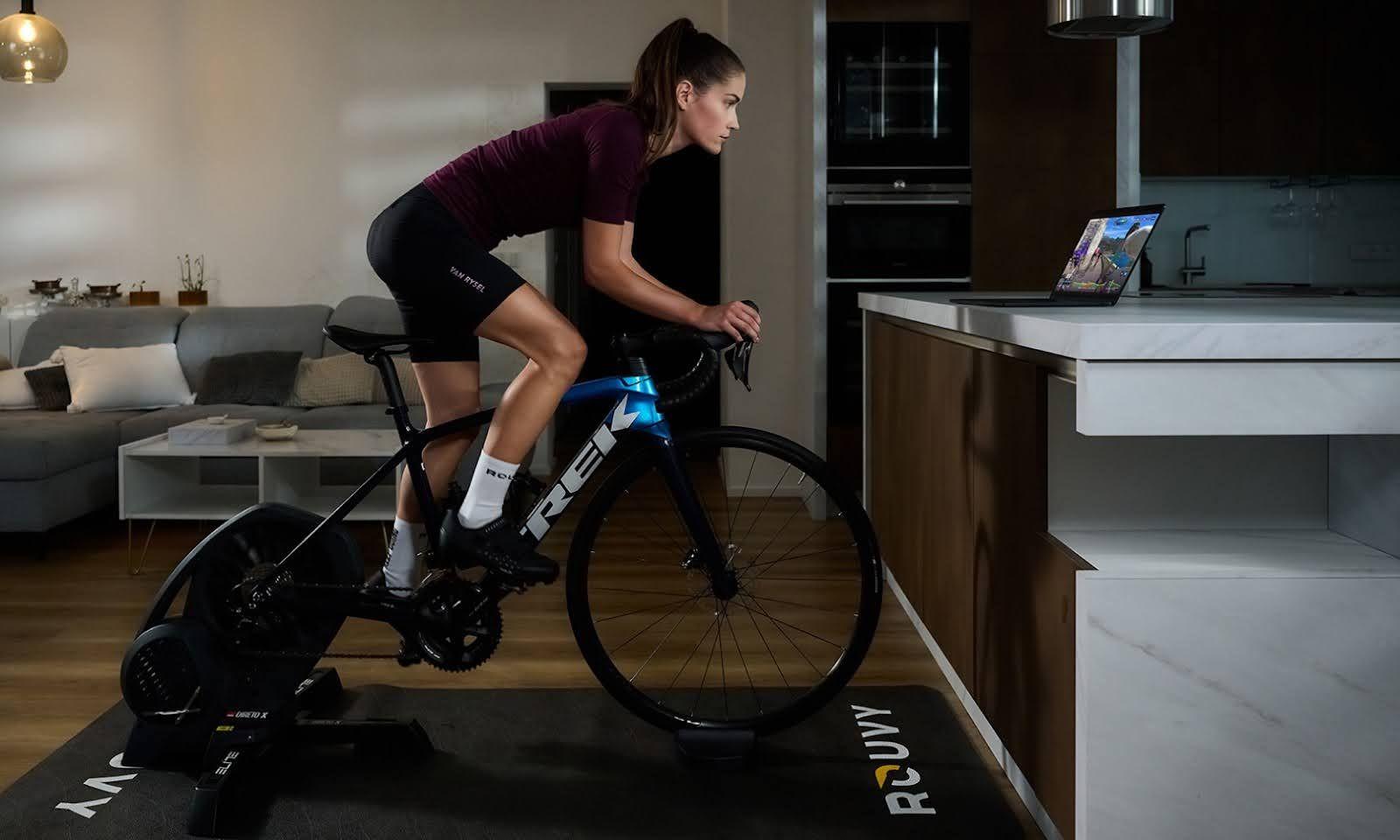
Combining yoga with indoor training on ROUVY
My friend’s angst about his long hours on the trainer is undoubtedly justified. ROUVY’s ultra-realistic platform makes the miles go by faster. Still, it can’t account for the physical stress of the body’s static position – especially if you’re working on your position for time trials or IRONMAN triathlons. However, yoga and indoor cycling go together like a hand in a cycling glove and can help prepare your body for those long indoor rides.
Remember to try a little bit of vinyasa to wake up your body and warm up before you climb on the trainer. Your hips will feel more open for that aero position, and your back will be more relaxed.
After you’re done, incorporate some recovery-focused routines to relax tight muscles, increase circulation and improve your recovery. Even incorporating just a few poses into your pre-ride and post-ride yoga practice will benefit your time in the saddle.
Getting started with yoga for cyclists: Beginner tips
If you’re brand new to yoga, take comfort in the fact that you don’t need to have any fancy equipment. You can strike a pose anywhere and still use yoga to improve cycling performance. That being said, you might find having some equipment is helpful.
For example, a yoga mat provides a little cushion and grip, protecting you from a dirty floor or yard. Then again, a pair of yoga blocks is great for beginners. You can use them to modify poses that are difficult for you, or to deepen the stretch of a pose that is too easy. A yoga strap can also be used to deepen stretches. You can find them at major online retailers or at your local big-box store.
If you need some help finding the best yoga poses for cyclists, don’t be afraid to invest in some online classes or a yoga app. Try Apple Fitness, YogaToday, or creators on YouTube like Yoga with Adriene. Wahoo System and iFit offer yoga workouts through their apps that are tailored to cyclists.
Advanced yoga to improve cycling performance
Yoga isn’t just for recovery; it can help build strength and stamina. Power and balance poses, such as Warrior I, Warrior III, and the Dolphin Pose, can give you strength for a more powerful sprint.
Poses like the Tree Pose and Eagle Pose work your balance, which helps with bike handling while sprinting.
Mobility drills – such as the Cat-Cow, Pigeon Pose, or Supine Spinal Twist – can help you feel more comfortable in the aero position, which will make you faster.
Final thoughts
Yoga isn’t a quick fix, although it may give you some immediate relief. It’s really a long-term investment in your mobility and strength that will help you both on and off the bike. It isn’t an all-or-nothing type of practice. Instead, try integrating some yoga stretches for cycling recovery or a few yoga poses for strength into your weekly training.
Consistency over time will yield measurable results that help you feel your best both on and off the bike.
Further reading
- Physical Therapy in Sport, ”Integration of yoga within exercise and sports science as a preventive and management strategy for musculoskeletal injuries/disorders and mental disorders”
- ROUVY, “Cycling Knee Pain: Causes, Prevention, And Recovery”
- Journal of Strength & Conditioning Research, “Time Course of the Effects of Static Stretching on Cycling Economy”
- ROUVY, “Cyclists Swear By Red Light Therapy – Here’s Why You Might Want To Try It Too”

